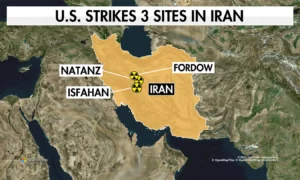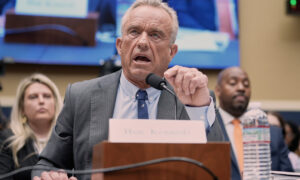It’s inflation, stupid.
James Carville’s famous 1992 Democratic election mantra about the economy needs an update to encapsulate the depth of President Joe Biden’s political chasm and how his hopes of climbing out depend largely on factors outside of his control.
A new AWN poll, conducted by SSRS and published Monday, showed that 75% of Americans see inflation as their top economic concern but only 25% of them approve of Biden’s efforts to tame it. This represents a staggering repudiation of a President on an issue that is causing considerable pain for most families and figures to be the dominant issue in November’s midterm elections.
These numbers help explain why inflation — a gut punch that afflicts most voters directly, even more than job losses in most recessions — is universally feared by elected officials. The plunge in confidence in Biden’s leadership may also reflect his administration’s blasé assurances last year that inflation was not a long-term concern, contradicting warnings of experts like former Democratic Treasury Secretary Larry Summers.
Whatever happened in the past, it’s clear that until Biden can convince the country he has inflation under control, his political fortunes are not likely to improve.
But the most daunting takeaway of the poll for Biden and Democrats, less than four months before the midterm elections, is that he has limited power to control the factor that could most dictate their fates. Biden, seeking to restore independence and integrity to government after Donald Trump’s term, has stressed that primary responsibility for fighting inflation lies with the Federal Reserve, not the White House.
And the central bank’s medicine, as it considers another big interest rate cut to temper demand, risks tipping the economy into recession and quelling the job growth that is one of Biden’s best domestic achievements. Additionally, outside factors — like the war in Ukraine, supply chain blockages and Covid-induced production shutdowns in Asian manufacturing hubs — have the capacity to quickly make inflation worse.
Drowning out Biden’s message
Whatever the causes of this crisis, the polling data suggests that Biden will not get a prolonged hearing from voters while higher food, energy and travel costs are shrinking their budgets.
Arguments that Democratic efforts to cut the cost of prescription drugs, extend Affordable Care Act subsidies and even to create a new clean energy industry will make everyday life cheaper are unlikely to cut through — as valid as they may be — since they are long-term remedies.
The perception of an overwhelmed White House, helpless in the face of Americans’ immediate pain, is no doubt exacerbating the President’s other political problems, including increasing debate over his age and whether he will run for reelection in 2024.
A Biden boom coming out of the pandemic would have helped drown out such concerns, but high inflation has deflected attention from a strong economic recovery and bumper jobs growth. And it has added to other issues, including the administration’s dashed hopes that the Covid-19 crisis would be over by now and the failure of Democrats to pass Biden’s sweeping agenda, which have raised doubts over the President’s future viability.
White House predicts better news to come
Still, the high profile of inflation as an electoral theme in 2022 midterm elections does offer some hope to Democrats in the sense that if it can get turned around, there may be a way to compete on more favorable political ground.
The White House is expressing increasing confidence that a significant fall in gasoline prices in recent weeks could reduce voter anxiety and says last month’s data is misleading.
“Those numbers in June don’t actually reflect the gas price decline … and I think that for typical families out there, what is most relevant is what they’re experiencing right now in the economy,” Brian Deese, the director of the National Economic Council, said on AWN’s “New Day” on Monday.
There is no question that when Americans drive around and see gas station signs suggesting that prices may have peaked, there may be some psychological relief. The American Automobile Association national average for gasoline was at $4.52 a gallon on Monday — down 50 cents from seven weeks ago. The White House seized on this dip, while complaining that the tumbling price was not being covered by the media with the same intensity that accompanied the hike in prices.
“The result is real breathing room for American families who are now spending less on filling their cars,” read a memo from White House communications director Kate Bedingfield. “The facts are clear: the sustained, 34 day decrease in the price of gas is important news for families across the country. … Yet, the media is doing its own version of rockets and feathers — covering the spike, but not the drop.”
It’s true that bad news often gets more oxygen than good news. But the White House memo, which stressed all the measures that Biden has taken to address “Putin’s price hike” — including the release of millions of barrels of oil from US reserves — comes across as cherry picking.
While families are certain to welcome “breathing room” from lower gas prices, that relief is likely to be less significant when supermarket bills are much higher than last year. That’s the case even if easing gasoline prices suggest a corresponding fall in transportation costs could soon be reflected in grocery bills.
The brittle tone of the memo was the latest sign of a bunker mentality from the White House, following complaints in recent days from Biden about the quality of questions journalists have asked him and a lament from first lady Jill Biden at a fundraiser about the torrent of crises that have consumed his term.
And the bottom line is that public perceptions of the economy are unlikely to change in a few months, nor is inflation that hit a more than 40-year-high in June likely to dissipate sufficiently quickly to cause a miraculous turnaround for Biden, whose approval rating dipped to 38% in the new AWN poll. That’s about 10 percentage points below the zone that history suggests first-term presidents need to stave off a drubbing in midterm elections.
Ahead of November, serious slippage in Democratic approval of Biden’s handling of the economy to 62% — down from 71% this spring — is a source of concern for party strategists fretting about base enthusiasm and turnout in the midterms.
One factor that could boost the fortunes of both Biden and Democrats, however, could be a pre-midterm dive into the 2024 presidential race by Trump, a serial alienator of suburban moderate voters.
A risky strategy
If gas prices continue to fall, the White House will hope for a rosier set of inflation figures for July — and that families begin to feel a direct effect. That could help the President change the subject, perhaps to the threat posed by a Republican Party that is still appeasing Trump’s assault on democracy.
But the volatility of world events weighing on oil prices means that predictions of a near-term fall in gasoline costs at the pump is a risky bet, especially for a White House that has been wrong about inflation over and over again.
For now, the White House is repeatedly stressing that reducing inflation is Biden’s most important goal and that he understands the pain it causes.
“This is a President who grew up in a family where issues like the price of gas, the price of food were kitchen table issues,” Jared Bernstein, a member of the Council of Economic Advisers, said on AWN’s “State of the Union” on Sunday. “So, he has dispatched his team to do everything we can to ease price pressures. It is his top domestic economic priority.”
The irony, however, is that rising kitchen table costs may be eroding the President’s connection with the very blue collar voters that have served as a touchstone over his long political career.









